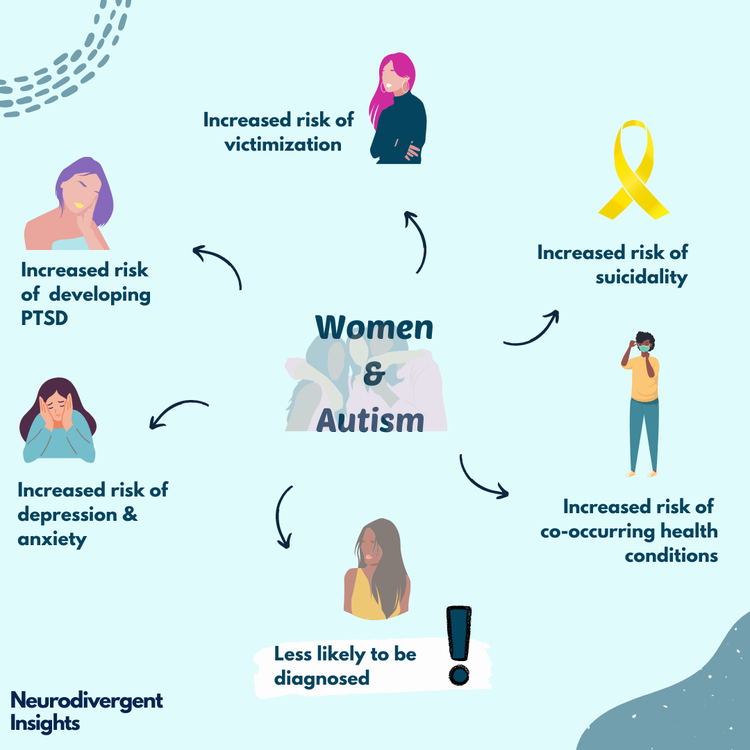The Influence of Very Early Treatment on Children with Autism: What Parents Need to Know
The Influence of Very Early Treatment on Children with Autism: What Parents Need to Know
Blog Article
Checking Out Autism: Strategies for Effective Communication and Communication
Reliable communication and interaction with individuals on the autism spectrum necessitate an extensive understanding of their distinct requirements and preferences. Techniques such as employing clear language, utilizing visual supports, and cultivating regular routines can significantly improve interaction and decrease anxiety. Identifying the significance of non-verbal hints and shared interests leads the method for significant connections. The intricacies of these techniques expose further factors to consider that merit expedition, especially in how they can be adjusted to individual experiences and varied contexts. What might these adjustments look like in technique?
Recognizing Autism Spectrum Problem
Autism Spectrum Problem (ASD) encompasses a variety of neurodevelopmental problems defined by obstacles in social interaction, communication, and recurring habits. The term "range" mirrors the diverse symptoms and differing levels of seriousness experienced by people with ASD. While some may display considerable problems, others may show high-functioning attributes, enabling higher freedom in every day life.
The onset of ASD normally occurs in early youth, with indicators frequently identifiable by age 2. Very early indications might consist of delayed speech advancement, restricted eye get in touch with, and troubles in recognizing social signs. The exact etiology of ASD stays uncertain, research study suggests a combination of environmental and genetic factors plays an essential role in its development.
Individuals with ASD frequently possess unique strengths, such as enhanced focus to information and exceptional memory skills. However, they might deal with recognizing abstract ideas and handling changes to regular. Because of this, treatments and support tailored to specific needs are crucial for cultivating communication and social skills. Recognizing the complexity of ASD is essential for promoting awareness, approval, and efficient strategies that promote significant interactions with people on the spectrum.

Significance of Clear Communication
Effective interaction is essential for promoting understanding and connection, particularly for people with Autism Range Disorder (ASD) Clear interaction not just assists in social communications however additionally improves the individual's capacity to share their thoughts, demands, and feelings. For individuals with ASD, the subtleties of language can commonly be challenging; consequently, utilizing straightforward and unambiguous language is vital.
Furthermore, clear interaction helps in reducing irritation and anxiousness that may arise from misconceptions. When messages are conveyed in a direct and regular fashion, individuals with ASD are much better geared up to analyze information precisely, which can significantly improve their social engagement and involvement in different setups.
Developing regimens and utilizing aesthetic supports can additionally reinforce clear interaction. These techniques give individuals with predictable frameworks that help understanding and retention of info. Furthermore, proactively paying attention and being client throughout interactions promotes a helpful setting where people with ASD feel valued and understood.
Eventually, focusing on clear communication not only equips people with ASD yet also fosters more significant links with their peers, caretakers, and the wider community, leading the way for comprehensive communications and joint relationships. - autism
Non-Verbal Communication Methods
Communication prolongs beyond words, and for people with Autism Range Condition (ASD), non-verbal hints play a substantial duty in communications. Non-verbal interaction strategies can include faces, motions, body language, and eye contact, every one of which serve as important parts for sharing objectives and emotions.
Comprehending and translating these non-verbal signals can boost interactions with people with ASD. For example, a cozy smile or open stance can develop an here inviting environment, encouraging engagement. Utilizing visual help-- such as photo cards or symbols-- can link interaction gaps and help share messages a lot more efficiently.
It is also vital to be mindful of personal room, as individuals with ASD might have various comfort degrees relating to proximity. Observing their responses to physical closeness can inform proper adjustments.

Producing Supportive Settings
Producing a supportive setting is critical for cultivating positive interactions and boosting the well-being go now of people with Autism Spectrum Disorder (ASD) Such atmospheres can substantially decrease anxiety and develop a sense of safety and security, enabling people to reveal themselves more easily.
To achieve this, it is important to take into consideration sensory sensitivities that people with ASD may experience. Changing the physical space to consist of soft lighting, marginal background sound, and comfortable seats can develop a soothing ambience. Additionally, making use of consistent regimens and clear visual routines can aid individuals expect changes and decrease unpredictability, further promoting convenience.
Social spaces must be structured to decrease overwhelming stimuli while giving opportunities for interaction in recommended activities. Assisting in locations designated for peaceful time can likewise function as a refuge during moments of stress and anxiety. Importantly, integrating aspects of selection empowers individuals, allowing them to exercise company in their environment.

Motivating Social Interactions
Cultivating social interactions amongst people with Autism Range Condition (ASD) requires deliberate strategies that focus on convenience and involvement. Establishing foreseeable regimens can help in reducing anxiousness, making social settings a lot more friendly. Creating organized settings with specified functions and duties permits individuals to engage without the frustrating stress of unstructured social dynamics.
Integrating passions and strengths into social tasks can work as a catalyst for interaction. Arranging group tasks around shared hobbies or topics of fascination can assist in all-natural discussions and links. In addition, utilizing visual supports, such as social manuscripts or pictorial learn this here now schedules, can help in comprehending social signs and assumptions.
Designing proper social actions is essential - autism. Peers and adults ought to demonstrate effective communication techniques, including energetic listening and turn-taking. Role-playing circumstances can additionally provide a secure space for people to exercise these abilities
Finally, promoting peer relationships with inclusive practices is important. Encouraging inclusive playdates or team getaways can produce chances for socialization in a comfortable setup. By implementing these instructors, caregivers and methods can substantially improve social interactions for people with ASD, promoting their total social advancement and well-being.
Conclusion
In verdict, efficient interaction and communication techniques are necessary for supporting people with Autism Spectrum Condition. Inevitably, these strategies empower individuals with autism to navigate social landscapes, advertising their total health and enabling the development of long lasting connections.
Efficient interaction and communication with individuals on the autism range necessitate an extensive understanding of their distinct requirements and preferences. Clear communication not only assists in social communications however additionally boosts the person's capacity to share their demands, ideas, and feelings.Cultivating social interactions amongst people with Autism Range Condition (ASD) requires intentional strategies that focus on convenience and interaction. By executing these instructors, caregivers and strategies can significantly boost social interactions for individuals with ASD, advertising their general social development and health.
In conclusion, efficient communication and communication methods are vital for supporting people with Autism Spectrum Problem.
Report this page